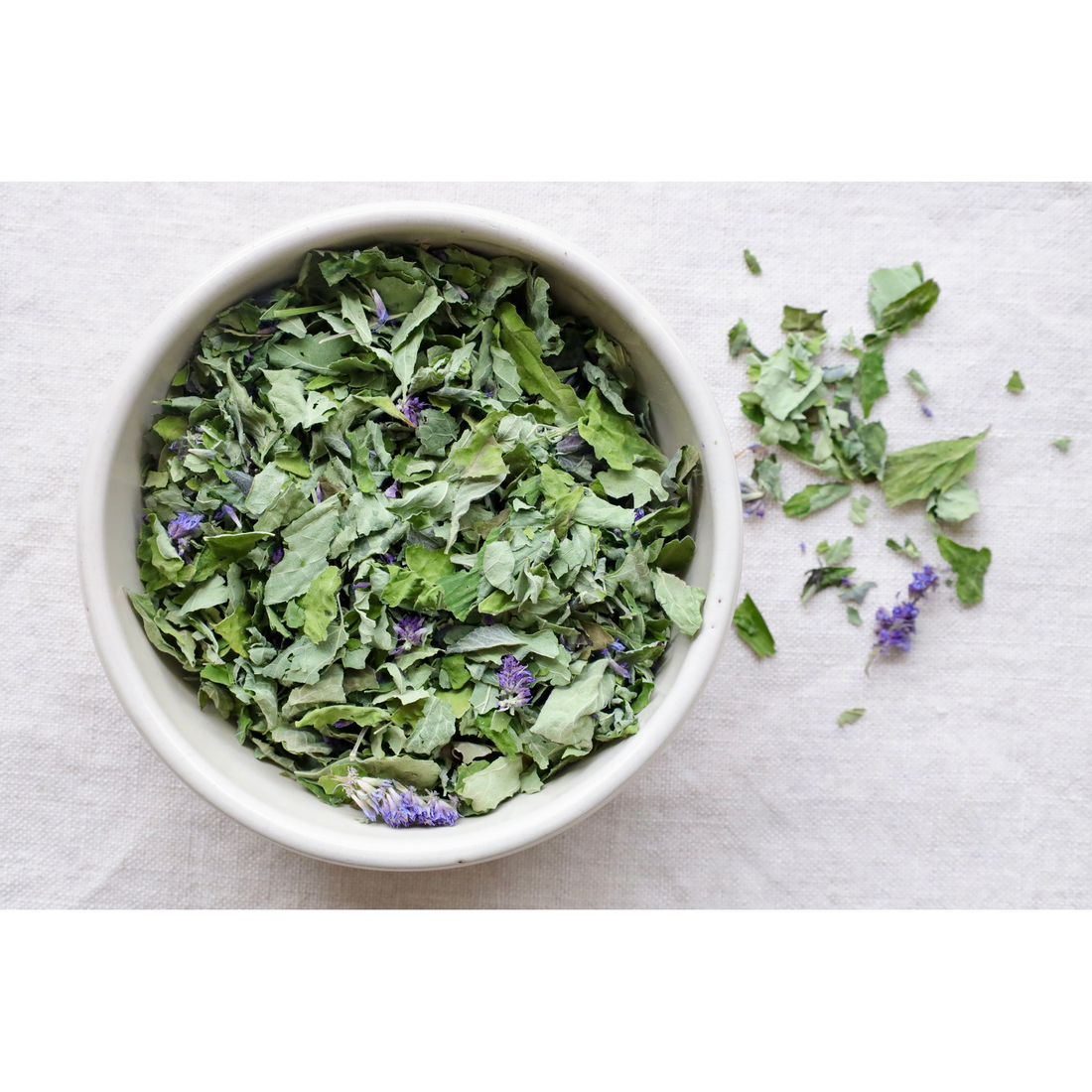
Anise Hyssop Uses: From Garden to Cupboard
Anise hyssop (Agastache foeniculum) or as we refer to it on our farm simply agastache, is one of those herbs that pulls you in with its scent. Anise hyssop tastes sweet, minty, a little like licorice and basil mingled together. It’s beloved by pollinators and people alike, and once you’ve grown or harvested it, it’s easy to understand why it earns a place in so many gardens.
In this post, we’re sharing some of our favorite anise hyssop uses—culinary, herbal, and creative ways to work with this uplifting plant in your kitchen and apothecary.
Why We Love Anise Hyssop
Anise hyssop is a hardy perennial in the mint family, native to North America. It thrives in the garden, draws in bees and butterflies, and smells incredible. But it’s not just a pretty plant—anise hyssop is a flavorful, soothing herb that lends itself to many uses, both traditional and modern.
Energetically, it’s uplifting and calming, making it especially well suited to support stress and digestive discomfort. It’s also antimicrobial and carminative, and has a long history of use as a tea herb and flavoring agent.

Culinary Uses for Anise Hyssop
If you haven’t tasted anise hyssop before, the flavor may surprise you—bright, herbal, and a little sweet. It pairs beautifully with both savory and sweet foods.
Try it in:
-
Herbal sugars: Blend dried leaves or flowers into sugar for sprinkling over shortbread, muffins, or fruit.
-
Salads: Use fresh leaves or petals as a fragrant, edible garnish.
-
Baked goods: Fold chopped fresh leaves into scone or cookie dough.
-
Herbal honeys: Infuse raw honey with dried anise hyssop for a naturally calming sweetener.
-
Vinegars: Steep the flowers in white wine vinegar for a gorgeous purple infusion.
Because the flowers retain their scent even when dried, they’re also a lovely addition to potpourri, herbal sachets, or homemade tea blends.
Anise Hyssop Tea or Agastache Tea
We reach for anise hyssop often when blending teas. It’s aromatic, soothing to the nerves, and gently supportive to digestion—especially when you’re feeling a little stressed, overfull, or run down.
To make a simple tea:
-
Steep 1–2 tsp of dried leaves or flowers in hot water for 10–15 minutes.
Enjoy warm, or chilled over ice for a refreshing summer cooler.
You can drink it on its own or blend with other herbs like lemon balm, chamomile, or tulsi for extra calming and uplifting effects.
How to Use Anise Hyssop for Wellness
In addition to its culinary charm, anise hyssop offers gentle support for the nervous and digestive systems. It’s often used to:
-
Ease nervous tension and mild anxiety
-
Calm an upset or gassy stomach
-
Support recovery from colds or mild respiratory issues
-
Encourage rest when the mind is spinning

It’s a wonderful bedtime tea herb, especially when paired with lavender or passionflower. We also love it in herbal steams, where its scent can help relax the breath and open the sinuses.
Creative Ways to Use Anise Hyssop at Home
If you’re lucky enough to grow or forage this herb in quantity, here are a few other ways to use it throughout the season:
-
Herbal Ice Cubes: Freeze chopped leaves and flowers into ice cube trays with water for summer drinks.
-
Natural Dyeing: The blossoms can lend a faint lavender hue to fabric or paper.
-
DIY Skincare: Infuse into oil for a mild, aromatic base oil suitable for lip balms or lotions.
-
Floral Bouquets: Use the purple flower spikes in fresh or dried arrangements—they’re beautiful and bee-loved.
How to Harvest and Store Anise Hyssop
Harvest just before or at the beginning of flowering, when the oils are strongest. You can dry the leaves and flowers separately or together—hang small bundles upside down in a well-ventilated, shaded space.
Once fully dry, store them in an airtight jar, out of direct light. Properly stored, anise hyssop retains its scent and flavor for a full year.
Final Thoughts
Anise hyssop is one of those plants that quietly does a lot—uplifting, calming, flavorful, and supportive. Whether you're sipping it as tea, infusing it into honey, or letting it brighten your kitchen garden, it brings a lightness that we always welcome.
We’re proud to grow anise hyssop here at La Ferme À Ciel Sur Mer, and to share its many uses with you.
Frequently Asked Questions
What does anise hyssop taste like?
Is anise hyssop edible? Yes - It’s sweet and minty, with hints of licorice and basil. Some compare it to fennel or tarragon.
Is anise hyssop the same as hyssop?
No. Anise hyssop is Agastache foeniculum, while true hyssop is Hyssopus officinalis. They’re in the same family but have different properties and flavors.
Is it safe for children?
Yes, anise hyssop is generally safe and gentle enough for children. Always start with a small amount and observe.
Can I use it fresh or dried?
Both! Fresh leaves are great in salads or teas. Dried leaves are wonderful for year-round tea blends and culinary uses.

Related Posts:
🌱 Browse our Organic herbs or Sign up for our newsletter to stay connected.